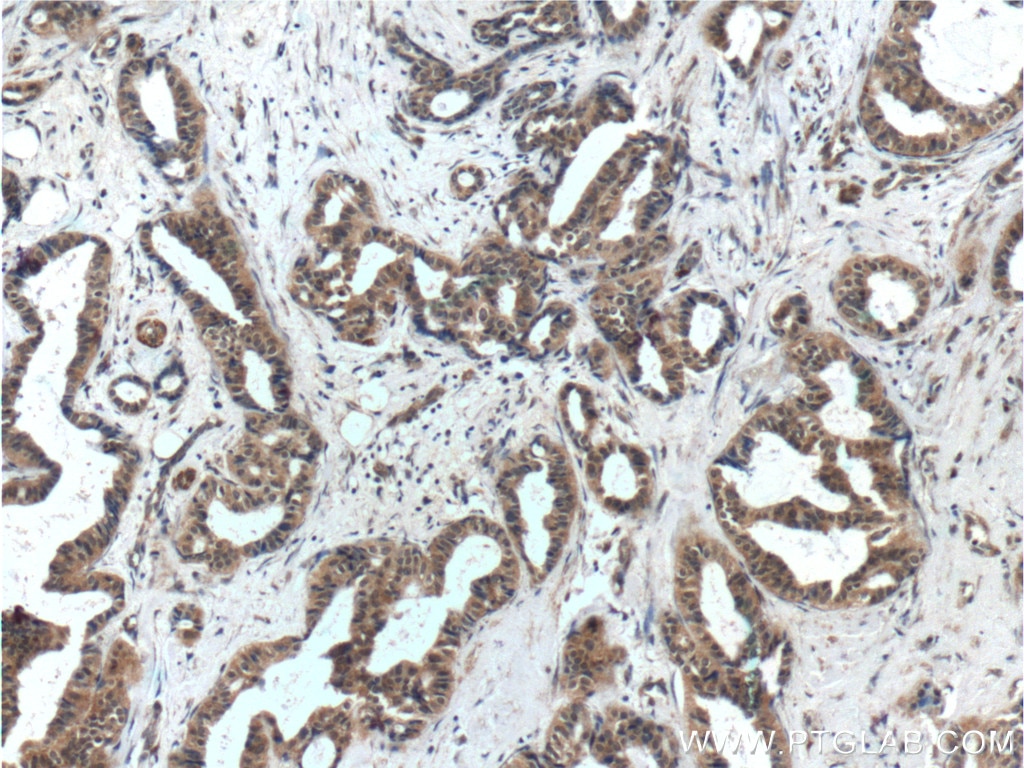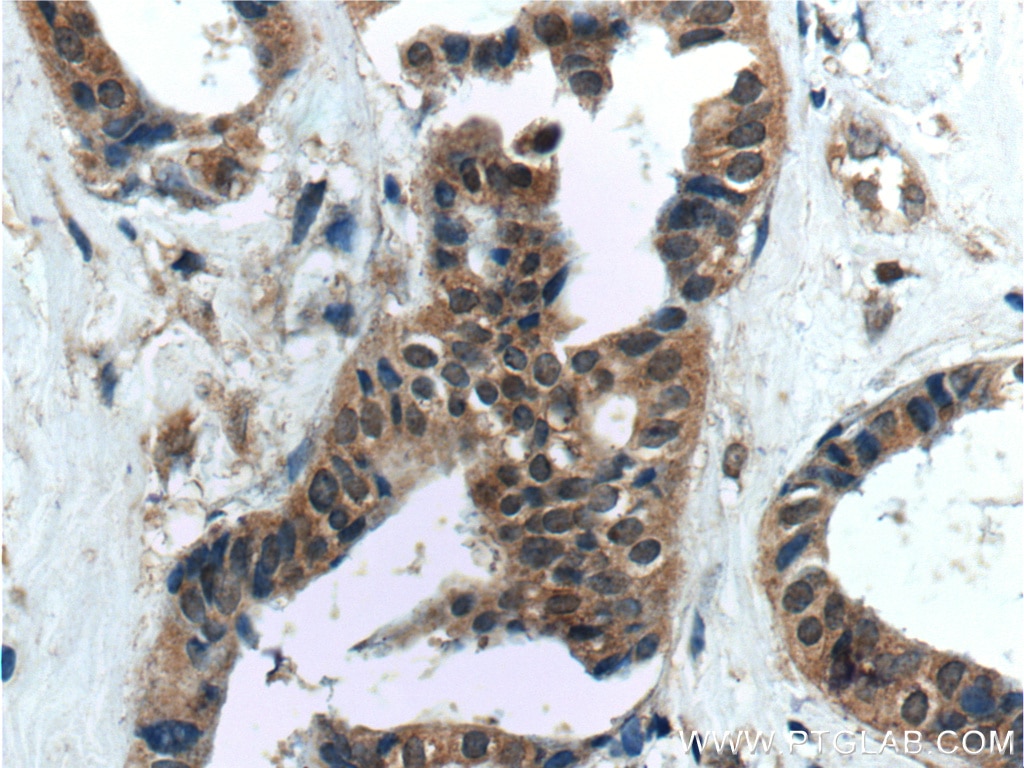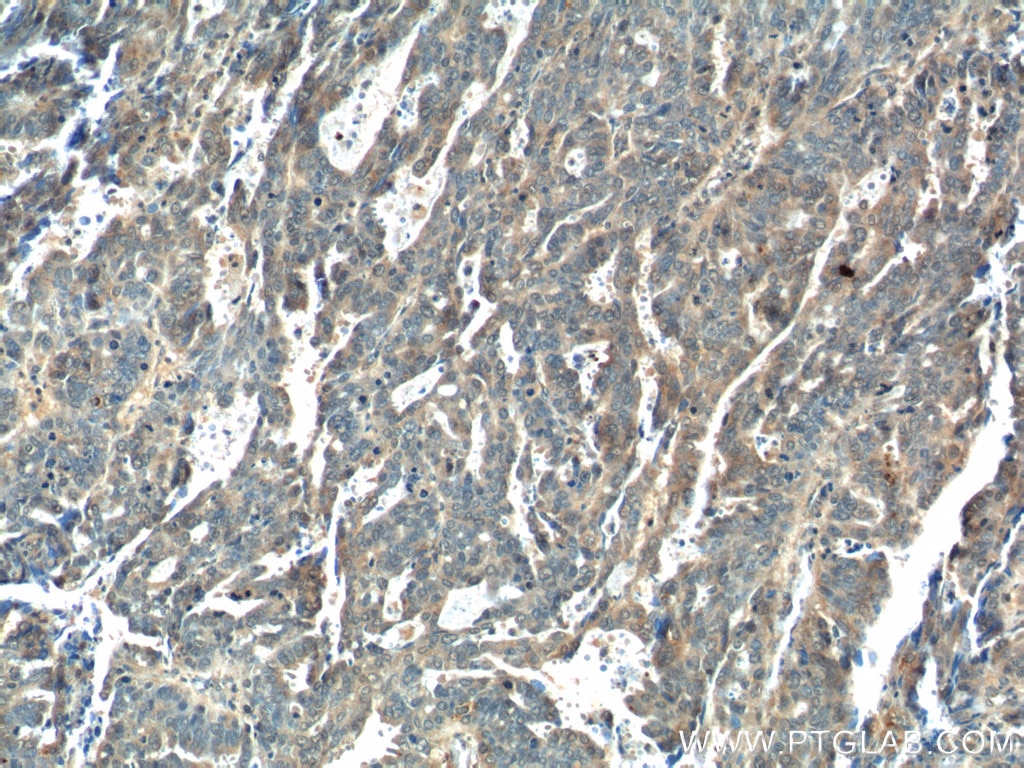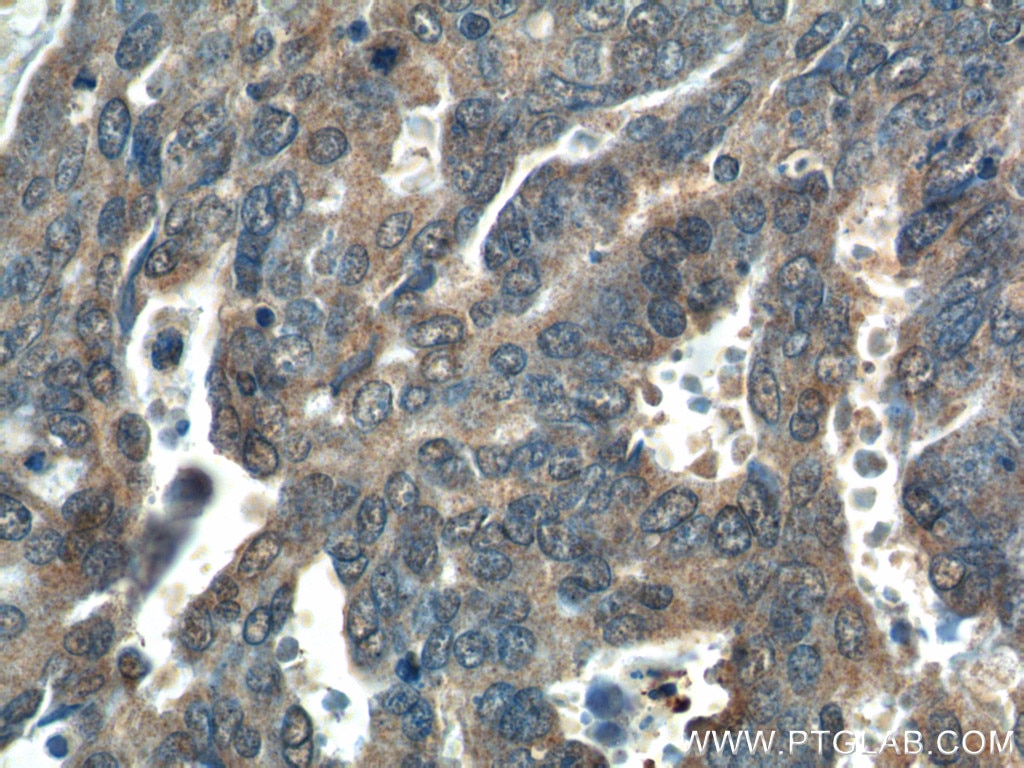WDFY3 / ALFY Polyclonal antibody
WDFY3 / ALFY Polyclonal Antibody for IHC, ELISA
Host / Isotype
Rabbit / IgG
Reactivity
human
Applications
IHC, ELISA
Conjugate
Unconjugated
Cat no : 25134-1-AP
Synonyms
Validation Data Gallery
Tested Applications
| Positive IHC detected in | human breast cancer tissue, human ovary tumor tissue Note: suggested antigen retrieval with TE buffer pH 9.0; (*) Alternatively, antigen retrieval may be performed with citrate buffer pH 6.0 |
Recommended dilution
| Application | Dilution |
|---|---|
| Immunohistochemistry (IHC) | IHC : 1:200-1:800 |
| It is recommended that this reagent should be titrated in each testing system to obtain optimal results. | |
| Sample-dependent, Check data in validation data gallery. | |
Product Information
The immunogen of 25134-1-AP is WDFY3 / ALFY Fusion Protein expressed in E. coli.
| Tested Reactivity | human |
| Host / Isotype | Rabbit / IgG |
| Class | Polyclonal |
| Type | Antibody |
| Immunogen | WDFY3 / ALFY fusion protein Ag18393 |
| Full Name | WD repeat and FYVE domain containing 3 |
| Calculated Molecular Weight | 3526 aa, 395 kDa |
| GenBank Accession Number | BC013377 |
| Gene Symbol | WDFY3 |
| Gene ID (NCBI) | 23001 |
| RRID | AB_2879916 |
| Conjugate | Unconjugated |
| Form | Liquid |
| Purification Method | Antigen affinity purification |
| Storage Buffer | PBS with 0.02% sodium azide and 50% glycerol pH 7.3. |
| Storage Conditions | Store at -20°C. Stable for one year after shipment. Aliquoting is unnecessary for -20oC storage. 20ul sizes contain 0.1% BSA. |
Background Information
WDFY3 also called ALFY, is a phosphatidylinositol 3-phosphate-binding protein that functions as a master conductor for aggregate clearance by autophagy.This protein shuttles from the nuclear membrane to colocalize with aggregated proteins, where it complexes with other autophagic components to achieve macroautophagy-mediated clearance of these aggregated proteins. However, it is not necessary for starvation-induced macroautophagy.
Protocols
| Product Specific Protocols | |
|---|---|
| IHC protocol for WDFY3 / ALFY antibody 25134-1-AP | Download protocol |
| Standard Protocols | |
|---|---|
| Click here to view our Standard Protocols |





